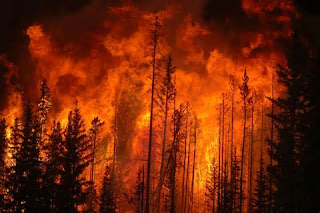Scientists have concluded that the Great Barrier Reef can no longer be saved because it is so damaged.
The plight of the reef is partly due to the "extraordinary rapidity" of climate change, according to experts.
The
reef has been severely damaged by the warming of the oceans, and around
95 per cent of it suffers from bleaching, according to scientists who
surveyed it in 2016.
Experts have said the ecological function of
the reef should be maintained as much as possible in coming years, but
that the reef itself will not be saved in its current form.
A
committee of experts set up by the Australian government said the lesser
target of "protecting the ecological function" of the reef is more
realistic than salvaging it.
The
Great Barrier Reef Marine Park Authority explained what this would
mean: "The concept of 'maintaining ecological function' refers to the
balance of ecological processes necessary for the reef ecosystem as a
whole to persist, but perhaps in a different form, noting the
composition and structure may differ from what is currently seen today".
They
said they were "united in their concern about the seriousness of the
impacts facing the Reef and concluded that coral bleaching since early
2016 has changed the Reef fundamentally".
"Members agreed that,
in our lifetime and on our watch, substantial areas of the Great Barrier
Reef and the surrounding ecosystems are experiencing major long-term
damage which may be irreversible unless action is taken now.
"The
planet has changed in a way that science informs us is unprecedented in
human history. While that in itself may be cause for action, the
extraordinary rapidity of the change we now observe makes action even
more urgent."
"There is great concern about the future of the
Reef, and the communities and businesses that depend on it, but hope
still remains for maintaining ecological function over the coming
decades," their statement continued.
Because it is believed the
coral bleaching is due to global warming, reducing carbon emissions is
integral to the plans to maintain the ecological function of the reef.
They
also said: "This needs to be coupled with increased efforts to improve
the resilience of the coral and other ecosystems that form the Great
Barrier Reef. The focus of efforts should be on managing the Reef to
maintain the benefits that the Reef provides".
http://www.nzherald.co.nz/world/news/article.cfm?c_id=2&objectid=11866044








